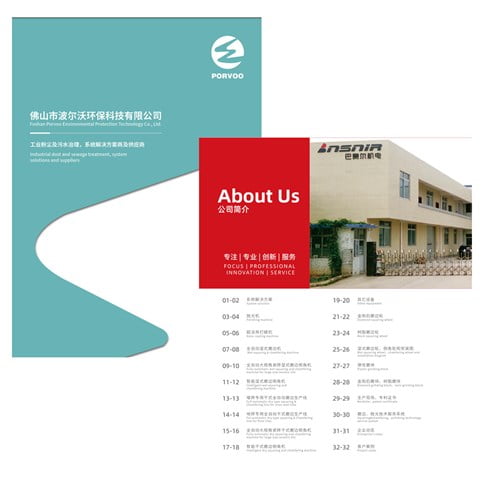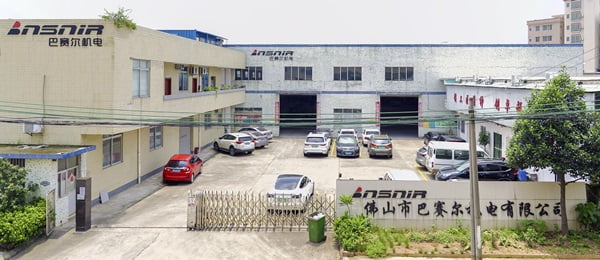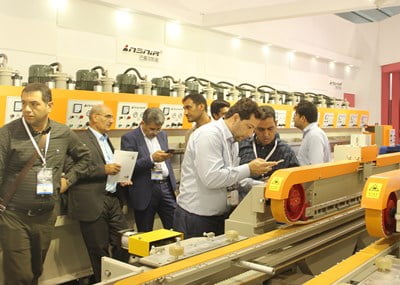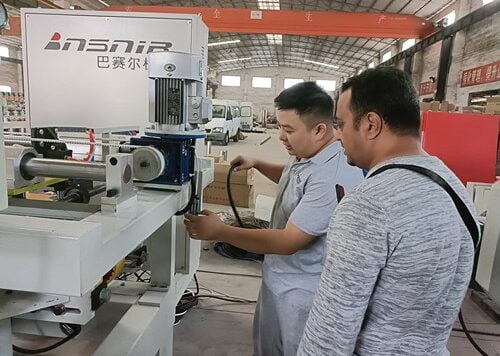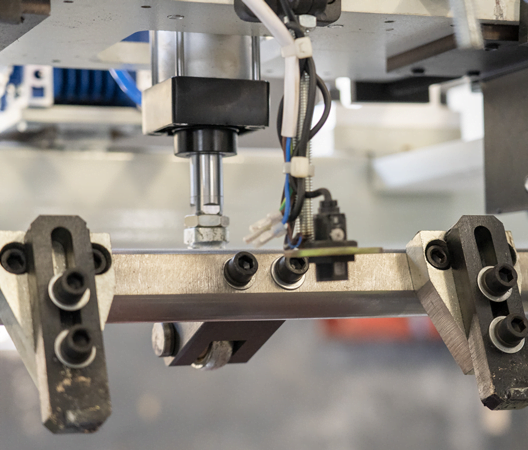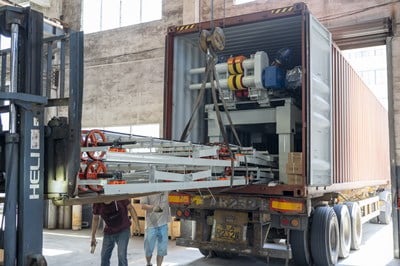Introduction
Selecting the right abrasive wheel for chamfering operations can make or break your manufacturing efficiency. In precision grinding and edge finishing, the choice between diamond and CBN wheels often determines not just the quality of your final product, but also your operational costs and production timelines. While both superabrasives offer superior performance compared to conventional wheels, their distinct properties create specific advantages that aren’t immediately apparent to many operators.
The complexity of this decision extends beyond simple performance metrics. Factors like workpiece material, grinding conditions, wheel bonding systems, and long-term cost considerations all play crucial roles in determining which abrasive type delivers optimal results for your specific application. Industry data shows that incorrect wheel selection can reduce productivity by up to 40% while increasing per-part costs significantly.
This comprehensive analysis examines the performance characteristics, applications, and economic implications of diamond versus CBN chamfering wheels. You’ll discover which material excels in specific scenarios, understand the technical factors driving performance differences, and gain insights into making cost-effective decisions for your grinding operations. Whether you’re processing ceramics, hardened steels, or exotic alloys, this comparison will guide you toward the optimal abrasive solution.
What Are Diamond Chamfering Wheels and How Do They Work?
Diamond wheels represent the pinnacle of abrasive technology for specific applications, utilizing synthetic or natural diamond particles as the cutting medium. BASAIR Tech has developed advanced diamond wheel technologies that leverage these exceptional properties for precision chamfering operations.
Diamond Abrasive Properties
Diamond’s extraordinary hardness rating of 10 on the Mohs scale translates to exceptional cutting ability on hard, brittle materials. The crystalline structure provides sharp, consistent cutting edges that maintain their geometry longer than conventional abrasives. In chamfering applications, this translates to superior edge quality and dimensional consistency across extended production runs.
The thermal properties of diamond create both advantages and limitations. While diamond offers excellent heat dissipation when properly bonded, it becomes unstable at temperatures exceeding 700°C (1292°F). This characteristic makes diamond wheels particularly effective for materials that generate moderate heat during grinding, such as ceramics, carbides, and non-ferrous metals.
Manufacturing and Bonding Systems
Modern diamond wheels utilize various bonding methods, including resin, metal, and vitrified systems. Resin-bonded wheels provide excellent surface finish but shorter life, while metal-bonded options offer extended durability for high-volume production. The concentration of diamond particles, typically measured in carats per cubic inch, directly impacts both performance and cost.
According to recent industry studies, diamond wheel concentrations between 50-125 provide optimal balance between cutting performance and wheel life for most chamfering applications. Higher concentrations don’t necessarily improve performance but significantly increase costs.
What Are CBN Chamfering Wheels and Their Unique Advantages?
Cubic Boron Nitride (CBN) wheels represent a specialized solution for ferrous materials, offering unique properties that make them indispensable for specific applications. CBN wheels demonstrate superior performance characteristics when grinding hardened steels and iron-based alloys.
CBN Material Characteristics
CBN’s hardness rating of approximately 9.5 on the Mohs scale, while slightly lower than diamond, provides exceptional durability when grinding ferrous materials. Unlike diamond, CBN maintains its cutting ability at temperatures up to 1000°C (1832°F), making it ideal for applications generating significant heat.
The chemical stability of CBN with iron-based materials creates a significant advantage over diamond wheels. While diamond readily reacts with iron at elevated temperatures, CBN maintains its structural integrity, resulting in consistent cutting action and predictable wheel wear patterns.
Performance in Ferrous Applications
Industry data indicates that CBN wheels can achieve wheel life improvements of 200-500% compared to conventional abrasives when grinding hardened steels above 45 HRC. This exceptional durability stems from CBN’s ability to maintain sharp cutting edges while resisting chemical degradation.
In our experience working with precision grinding applications, CBN wheels consistently deliver superior geometric accuracy when chamfering hardened tool steels and bearing components. The predictable wear characteristics allow for precise compensation calculations, ensuring dimensional consistency across production batches.
| Material Type | CBN Performance | Diamond Performance |
|---|---|---|
| Hardened Steel (>45 HRC) | Excellent | Poor |
| Tool Steels | Superior | Not Recommended |
| Cast Iron | Very Good | Moderate |
How Do Diamond and CBN Wheels Compare in Cutting Performance?
The performance comparison between diamond and CBN wheels reveals distinct advantages for each abrasive type, with material compatibility serving as the primary determining factor.
Cutting Efficiency Analysis
Diamond wheels demonstrate superior cutting rates on non-ferrous and non-metallic materials. Test data shows cutting efficiency improvements of 30-60% compared to CBN when processing ceramics, carbides, and composite materials. The sharp crystal structure and high hardness create aggressive cutting action that removes material quickly while maintaining surface quality.
CBN wheels excel in ferrous material applications, showing 40-80% better cutting efficiency than diamond on hardened steels. The thermal stability allows for higher cutting speeds without wheel degradation, while the chemical compatibility prevents rapid wear that occurs with diamond wheels on iron-based materials.
Surface Finish Quality
Both abrasive types can achieve exceptional surface finishes when properly applied. Diamond wheels typically produce surface finishes in the 0.1-0.4 μm Ra range on ceramics and carbides, while CBN wheels achieve 0.2-0.6 μm Ra on hardened steels. The difference stems from material interaction rather than abrasive capability.
Research from grinding technology institutes indicates that surface finish quality depends more on wheel specification, grinding parameters, and machine condition than purely on abrasive type. However, using the appropriate abrasive for the workpiece material ensures consistent results across production runs.
Dimensional Accuracy Considerations
Dimensional accuracy in chamfering operations depends heavily on wheel wear predictability. Diamond wheels on appropriate materials show linear wear patterns that facilitate accurate compensation. CBN wheels on ferrous materials demonstrate similar predictability, while cross-application usage (diamond on steel, CBN on ceramics) results in unpredictable wear and dimensional variations.
Which Materials Are Best Suited for Each Wheel Type?
Material compatibility represents the most critical factor in wheel selection, with specific applications showing clear preferences for either diamond or CBN abrasives.
Diamond Wheel Applications
Diamond wheels excel on hard, non-ferrous materials including:
- Technical ceramics (alumina, zirconia, silicon carbide)
- Cemented carbides and cutting tools
- Glass and optical materials
- Composite materials and carbon fiber
- Non-ferrous metals (aluminum, copper alloys)
A case study from the aerospace industry demonstrated 65% reduction in chamfering time for ceramic turbine components when switching from conventional wheels to specialized diamond chamfering wheels. The improved cutting efficiency and extended wheel life resulted in 40% lower per-part processing costs.
CBN Wheel Applications
CBN wheels provide optimal performance on ferrous materials:
- Hardened tool steels (>45 HRC)
- Bearing steels and races
- High-speed steel cutting tools
- Cast iron components
- Powder metallurgy parts
An automotive bearing manufacturer reported 300% wheel life improvement when implementing CBN wheels for race chamfering operations. The consistent cutting action eliminated geometric variations that previously required secondary operations.
Application-Specific Considerations
While material type provides primary guidance, specific application factors influence wheel selection:
- Heat generation: High-heat applications favor CBN for ferrous materials, diamond for non-ferrous
- Surface finish requirements: Both can achieve excellent finishes on compatible materials
- Production volume: Higher volumes may justify higher initial costs for better wheel life
- Geometric complexity: Complex shapes may require specific bonding systems regardless of abrasive type
What Are the Cost Considerations and Economic Factors?
Economic analysis of diamond versus CBN wheels requires comprehensive evaluation beyond initial purchase price, incorporating wheel life, productivity gains, and quality improvements.
Initial Investment Analysis
Diamond wheels typically command 20-40% higher initial costs than comparable CBN wheels, with prices varying significantly based on diamond concentration, bonding system, and wheel specifications. However, this cost differential becomes meaningless when comparing performance on incompatible materials.
CBN wheels offer moderate initial costs while providing exceptional value on ferrous materials. The key economic factor lies in matching wheel type to application rather than comparing absolute costs.
Total Cost of Ownership
Industry studies reveal that wheel costs represent only 2-5% of total grinding operation costs, with labor, machine time, and quality issues comprising the majority of expenses. Proper wheel selection can reduce total grinding costs by 25-45% through improved productivity and reduced scrap rates.
| Cost Factor | Diamond (Ceramics) | CBN (Steel) | Incorrect Selection |
|---|---|---|---|
| Wheel Life | 300-500% vs conventional | 200-400% vs conventional | 50-80% vs conventional |
| Cutting Rate | 40-60% improvement | 30-50% improvement | 20-40% reduction |
| Quality Issues | Minimal | Minimal | Significant |
Productivity Impact Assessment
The productivity gains from proper wheel selection often overshadow cost considerations. A precision grinding facility processing mixed materials achieved 35% throughput improvement by implementing application-specific wheel selection protocols. The investment in both diamond and CBN wheels paid for itself within six months through improved efficiency and reduced downtime.
While the initial investment in premium abrasive wheels may seem substantial, the economic benefits of matching wheel type to application consistently justify the expense across diverse manufacturing environments.
How to Choose the Right Wheel for Your Application?
Selecting the optimal chamfering wheel requires systematic evaluation of multiple factors, with material compatibility serving as the foundation for all other decisions.
Decision Framework
Begin with workpiece material analysis:
- Ferrous materials: CBN wheels provide superior performance and value
- Non-ferrous/non-metallic materials: Diamond wheels offer optimal cutting efficiency
- Mixed materials: Consider dedicated wheels for each material type
Technical Specification Considerations
Beyond abrasive type, several specifications impact performance:
- Grit size: Finer grits (220-400) for finish quality, coarser grits (80-150) for material removal
- Concentration: Higher concentrations for difficult materials, standard concentrations for general applications
- Bonding system: Resin bonds for surface finish, vitrified bonds for wheel life, metal bonds for demanding applications
Application-Specific Guidelines
High-volume production scenarios benefit from wheels optimized for extended life, even at higher initial costs. The reduced changeover frequency and consistent performance justify premium wheel specifications.
Precision applications requiring tight tolerances should prioritize wheels with predictable wear characteristics and proven dimensional stability. Both diamond and CBN wheels can meet these requirements when properly specified.
Mixed material operations often achieve optimal results with dedicated wheels for each material type rather than attempting to find compromise solutions that perform adequately across all materials.
What Does the Future Hold for Chamfering Wheel Technology?
The evolution of chamfering wheel technology continues advancing through improvements in abrasive manufacturing, bonding systems, and application-specific optimization.
Emerging Technologies
Recent developments in synthetic diamond and CBN production have created more consistent abrasive particles with improved friability characteristics. These advances enable better wheel design optimization for specific applications while reducing manufacturing costs.
Advanced bonding technologies, including hybrid systems combining multiple bonding types, offer improved performance characteristics. These innovations provide better balance between cutting efficiency and wheel life while expanding the operating parameter range for both diamond and CBN wheels.
Industry Trends
The trend toward automation and lights-out manufacturing drives demand for wheels with extended, predictable life characteristics. Both diamond and CBN wheel technologies are responding with improved consistency and reduced variation in performance characteristics.
Sustainability considerations increasingly influence wheel selection, with emphasis on longer wheel life and reduced waste generation. The superior performance of properly applied superabrasive wheels aligns well with these environmental objectives.
Conclusion
The choice between diamond and CBN chamfering wheels ultimately depends on workpiece material compatibility, with each abrasive type offering distinct advantages in appropriate applications. Diamond wheels excel on ceramics, carbides, and non-ferrous materials, providing superior cutting rates and surface finish quality. CBN wheels deliver exceptional performance on hardened steels and ferrous materials, offering extended wheel life and consistent cutting action at elevated temperatures.
Economic analysis consistently favors selecting the appropriate wheel type over cost-minimization strategies. The productivity gains and quality improvements from proper wheel selection typically justify premium pricing within months of implementation. Manufacturing operations processing diverse materials often achieve optimal results by maintaining dedicated wheel inventories rather than seeking universal solutions.
For precision chamfering operations requiring consistent quality and maximum efficiency, investing in application-specific wheels represents a strategic advantage. Whether processing advanced ceramics with diamond wheels or hardened steels with CBN wheels, the performance benefits extend far beyond the grinding operation itself.
The future of chamfering wheel technology promises continued improvements in both diamond and CBN formulations, making proper selection even more critical for competitive manufacturing operations. Consider your specific material requirements, production volumes, and quality standards when selecting between these advanced abrasive technologies.
Ready to optimize your chamfering operations? Explore the comprehensive range of precision diamond and CBN chamfering wheels designed for demanding manufacturing applications.
Frequently Asked Questions
Q: What are the key differences between Diamond and CBN Chamfering Wheels?
A: Diamond and CBN chamfering wheels differ primarily in their applications and physical properties. Diamond wheels are exceptionally hard and ideal for carbide materials, while CBN wheels are better suited for steel due to their high abrasion resistance and lower hardness compared to diamond. CBN does not react with metal groups the way diamond can, making it preferable for certain metal types.
Q: Which materials are Diamond and CBN Chamfering Wheels best suited for?
A: Diamond chamfering wheels are excellent for carbide materials due to their extreme hardness. CBN wheels, on the other hand, are more suitable for steel, as they provide a superior grinding performance on softer materials like steel. This distinction is crucial for optimizing the grinding process based on the workpiece material.
Q: How do Diamond and CBN Chamfering Wheels compare in terms of durability and maintenance?
A: Both diamond and CBN wheels offer high durability due to their superabrasive nature. However, CBN wheels can be more prone to oxidation when used with water-based coolants, which can reduce their lifespan. Diamond wheels generally require less maintenance in terms of coolant choice, but both types need careful handling to ensure longevity.
Q: What coolant options are recommended for Diamond and CBN Chamfering Wheels?
A: For both diamond and CBN wheels, coolant choice is important. Oil-based coolants are often preferred for CBN wheels as they provide better lubrication and reduce oxidation risks. Diamond wheels can tolerate a wider range of coolants, including water-based options, but oil-based coolants may still offer advantages in certain applications.
Q: Which wheel type provides a better surface finish in chamfering operations?
A: The choice between diamond and CBN wheels for surface finish depends on the material being worked. Diamond wheels can provide a superior finish on carbide materials, while CBN wheels are often preferred for steel due to their ability to maintain a consistent grinding performance and produce a smoother finish on these softer metals.
Q: How do I decide between Diamond and CBN Chamfering Wheels for my specific application?
A: To decide between diamond and CBN chamfering wheels, consider the material you are working with and the desired outcome. Ask yourself:
- Material Type: Carbide or steel?
- Surface Finish: Do you need a precise finish on harder carbides or a smooth finish on softer steels?
- Coolant Compatibility: Will you be using oil or water-based coolants?
Choosing the right wheel based on these factors will help ensure optimal performance and longevity.
External Resources
- Diamond VS CBN – Cuttermasters – A detailed technical comparison between diamond and CBN abrasives, discussing hardness, abrasion resistance, and suitability for grinding different materials, especially highlighting performance differences and limitations.
- Choosing Between Diamond and CBN Grinding Wheels – Eagle Superabrasives – Explains the performance of diamond vs CBN wheels for industrial applications, specifically for grinding HVOF coatings, with recommendations based on workpiece material.
- CBN vs Diamond – Tormek Community Forum – Provides insights from tool sharpening professionals on the comparative fragility and optimal use cases of diamond and CBN wheels, emphasizing speed and grinding conditions.
- CBN vs diamond grinding wheels – Sawmill Creek Woodworking – Discusses practical experiences and consensus in the woodworking community about when to choose CBN or diamond grinding wheels for steel versus carbide tools.
- Diamond vs. CBN Whats Better For Sharpening My … – YouTube – A video explanation highlighting the differences in sharpening performance and best uses for CBN and diamond wheels in tool maintenance.
- Diamond vs CBN: Which Wheel to Choose for Grinding? – Benchmark Abrasives Blog – Outlines the distinct characteristics and performance factors of diamond and CBN wheels, helping users decide which is best for specific materials and applications.

